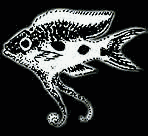After talking with jeebus I realized we don't have any good discussion threads about this or a thread that defines it. So here's my take.
I would say that the generation would be a grading scale used by breeders to put a label on their stock and to keep track of interbreeding.
In the troph world if you were to be put in front of those that are out for breeding stock.
Listed from origin to down the line....
Wild caught(WC) fish from the lake caught wild with great gene diversity.
F1- First generation from wilds.
F2- offspring from either wc+f1 or f1+f1.
F3- wc+f2 or f1+f2 or f2+f2.
F4- wc+f3 or f1+f3 or f2+f3 or f3+f3.
Tank Raised(TR)- offspring of no origin/classification or just too far down in the classification scale.
Also anything bred from TR is considered still TR regardless of classification of other parent.
Pond Raised(PR)- offspring produced out of a pond with no classification or parents of no classification.
I would label any offspring from PR+ any other classification as TR.
.....And so on
Keeping in mind that f- denotion is carried on from the last generation it was bred from that is furthest along the line. So what that means is regardless if there was a wc parent if the other parent is f1000 then the offspring would be carried from the f1000 parent making it a f1001.
It really depends on the market but honestly.... fwhatever + wc would be more favorable then just fwhatever+fwhatever since the gene diversity is somewhat "replenished" or "stronger".
The wilds fetch a pretty penny as you can see and from there prices drop depending on the buyer. (For jeebus who is wondering if there is a grading scale for cost)
Most here will just buy trophs for the enjoyment of keeping them making us hobbyist with some sort of "purist" blood in us wanting the best. Then you have those that are hardcore breeders that not only keep for the enjoyment of breeding but prefer to fetch the most for their work so in these cases the greater or closest to origin offspring would be more favorable to them.
The whole generation thing was made up to grade the offspring and for broodstock strength gauge. Its believed that the further along the line you go the worst the unfavorable genes get so you either breed good stock back into it or introduce unrelated new stock.
I know this is not the same compared to other species of fish where f1xf1 would be f1 but then again we are breeding gene diversity and not for a certain trait or feature. IMO what you do with other species is line breeding in which you pick a favored trait/feature/pattern/color and breed back into itself to have that occur more often and consistent.
So this is my take on it.
I would say that the generation would be a grading scale used by breeders to put a label on their stock and to keep track of interbreeding.
In the troph world if you were to be put in front of those that are out for breeding stock.
Listed from origin to down the line....
Wild caught(WC) fish from the lake caught wild with great gene diversity.
F1- First generation from wilds.
F2- offspring from either wc+f1 or f1+f1.
F3- wc+f2 or f1+f2 or f2+f2.
F4- wc+f3 or f1+f3 or f2+f3 or f3+f3.
Tank Raised(TR)- offspring of no origin/classification or just too far down in the classification scale.
Also anything bred from TR is considered still TR regardless of classification of other parent.
Pond Raised(PR)- offspring produced out of a pond with no classification or parents of no classification.
I would label any offspring from PR+ any other classification as TR.
.....And so on
Keeping in mind that f- denotion is carried on from the last generation it was bred from that is furthest along the line. So what that means is regardless if there was a wc parent if the other parent is f1000 then the offspring would be carried from the f1000 parent making it a f1001.
It really depends on the market but honestly.... fwhatever + wc would be more favorable then just fwhatever+fwhatever since the gene diversity is somewhat "replenished" or "stronger".
The wilds fetch a pretty penny as you can see and from there prices drop depending on the buyer. (For jeebus who is wondering if there is a grading scale for cost)
Most here will just buy trophs for the enjoyment of keeping them making us hobbyist with some sort of "purist" blood in us wanting the best. Then you have those that are hardcore breeders that not only keep for the enjoyment of breeding but prefer to fetch the most for their work so in these cases the greater or closest to origin offspring would be more favorable to them.
The whole generation thing was made up to grade the offspring and for broodstock strength gauge. Its believed that the further along the line you go the worst the unfavorable genes get so you either breed good stock back into it or introduce unrelated new stock.
I know this is not the same compared to other species of fish where f1xf1 would be f1 but then again we are breeding gene diversity and not for a certain trait or feature. IMO what you do with other species is line breeding in which you pick a favored trait/feature/pattern/color and breed back into itself to have that occur more often and consistent.
So this is my take on it.


Comment